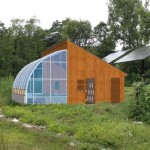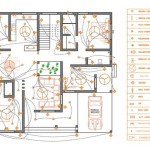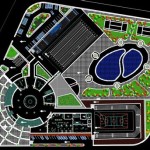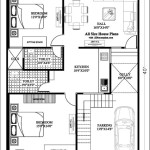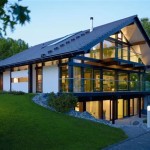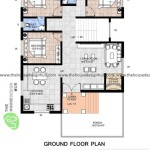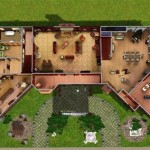Essential Aspects of Castle House Plans: A Comprehensive Guide
Castle house plans evoke images of grandeur, opulence, and a bygone era. Whether you're a history buff, a lover of architecture, or simply dreaming of living in a castle of your own, it's essential to understand the unique aspects of castle design before embarking on a building project.
From majestic towers to intricate stonework, castle house plans offer a multitude of possibilities when it comes to creating a truly unique and unforgettable home. However, these plans also come with specific considerations that require careful attention to detail.
In this comprehensive guide, we'll explore the essential aspects of castle house plans, providing you with valuable insights into their history, architectural elements, and modern interpretations. Whether you're planning to build your own castle or simply want to expand your knowledge of these architectural marvels, this guide will serve as an invaluable resource.
Historical Evolution of Castle Architecture
The origins of castle architecture can be traced back to the medieval period, when fortified structures were essential for protection and defense against invaders. Over time, castles evolved from purely defensive structures into grand residences that showcased the wealth and power of their owners.
Early castle designs featured thick stone walls, narrow windows, and imposing towers. As architectural techniques advanced, castles became more elaborate, incorporating elaborate stonework, decorative turrets, and sprawling courtyards.
Today, castle house plans continue to draw inspiration from historical architecture while incorporating modern amenities and sustainable design principles. Architects have reinterpreted classic castle elements, such as crenellated towers, vaulted ceilings, and grand fireplaces, to create contemporary homes that are both captivating and functional.
Architectural Elements of Castle House Plans
Castle house plans are characterized by a distinct set of architectural elements that distinguish them from other types of homes. These elements include:
- Towers: Towers, both round and square, are iconic features of castle house plans. They provide vertical circulation and offer panoramic views of the surrounding landscape.
- Battlements: Crenellated battlements, with their alternating rows of crenels (openings) and merlons (solid sections), are a signature element of castle architecture. They add visual interest and historical charm to the building's exterior.
- Vaulted Ceilings: Vaulted ceilings, with their elegant curves and intricate ribs, create a sense of grandeur and spaciousness. They can be found in both public and private spaces, adding a touch of medieval charm to the interior.
- Stonework: Stonework is an essential material in castle house plans, both for structural integrity and aesthetic appeal. From rustic fieldstone to finely carved ashlar, stonework adds a timeless and authentic touch to the building.
- Courtyards: Courtyards, enclosed by surrounding walls, were an integral part of castle design. They provided a secure outdoor space for gatherings, recreation, and the performance of daily tasks.
Modern Interpretations of Castle House Plans
While castle house plans draw inspiration from historical architecture, modern interpretations often incorporate contemporary design principles and sustainable features. Architects have reimagined classic castle elements to create homes that are both visually appealing and energy-efficient.
Modern castle house plans may feature:
- Sustainable Materials: Architects are using sustainable materials, such as reclaimed wood and low-VOC paints, to reduce the environmental impact of castle house plans.
- Energy Efficiency: Modern castle house plans incorporate energy-efficient features, such as double-glazed windows, solar panels, and geothermal heating systems, to minimize energy consumption.
- Open Floor Plans: While traditional castle house plans often had separate rooms for different functions, modern interpretations often feature open floor plans that promote a sense of flow and spaciousness.
- Contemporary Finishes: Modern castle house plans may incorporate contemporary finishes, such as sleek cabinetry, polished concrete floors, and designer lighting, to create a sophisticated and stylish interior.
By blending historical charm with modern amenities, architects can create castle house plans that are both timeless and relevant to today's lifestyles.
Conclusion
Castle house plans offer a unique and captivating approach to home design. By understanding the historical evolution, architectural elements, and modern interpretations of these plans, you can make informed decisions when it comes to creating a castle home of your own.
Whether you prefer the grandeur of a traditional castle or the fusion of historical and contemporary elements, castle house plans can provide a framework for a truly unforgettable home that will stand the test of time.
Remember, it's important to consult with an experienced architect who specializes in castle house plans to ensure that your dream home is designed and built to the highest standards of quality and authenticity.

Scottish Castle House Plan With Tower 5 Bedrms 116 1010

Cau Novella Luxury House Plan Small Castle

Dunrobin Castle House Plan European Plans
European Flair Castle House Plans Houseplans Blog Com

Balm Castle House Plans Luxury Home

Scottish Castle House Plan With Tower 5 Bedrms 116 1010

Dysart Castle House Plan Plans Mansion Floor English Country

Castle Home Plan With Elevator 44109td Architectural Designs House Plans

European Style House Plan 4 Beds 3 5 Baths 3437 Sq Ft 310 644 Houseplans Com

Plan 052h 0089 The House

